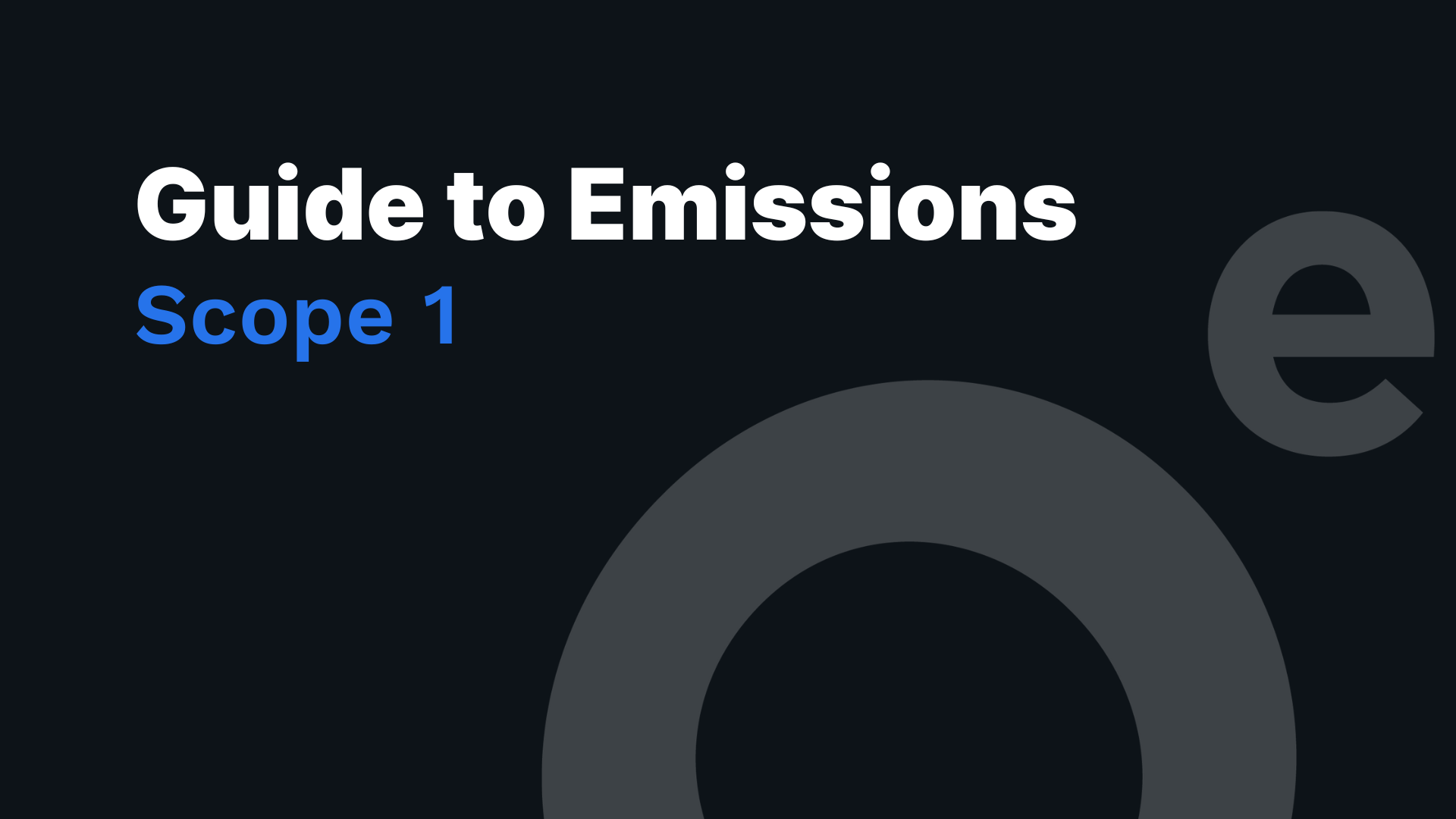Scope 1 emissions are greenhouse gas (GHG) emissions directly produced by a company's activities, facilities, or equipment. Known as "direct emissions," they originate from the company's own operations.
Sources of Direct GHG Emissions
Direct GHG emissions typically result from:
Stationary Combustion: Generating electricity, heat, or steam through fuel combustion in stationary sources.
Mobile Combustion: Transporting materials, products, waste, and employees via fuel-burning vehicles.
Processing Activities: Physical or chemical processing in manufacturing or material processing.
Fugitive Emissions: Unintentional releases, such as methane from coal mines or HFCs from refrigeration and A/C equipment.
Importance of Scope 1 Emissions
Scope 1 emissions are a crucial component of a company's carbon footprint and are often the easiest to quantify and manage due to their direct link to the company's operations. Companies can reduce these emissions through cleaner technologies, energy efficiency improvements, and switching to renewable energy sources. Offsetting emissions through projects like reforestation or renewable energy is also effective.
Measuring and Reporting
Measuring and reporting Scope 1 emissions is essential for greenhouse gas accounting and often required by regulatory bodies, such as the Environmental Protection Agency (EPA) in the United States. It helps companies understand their carbon footprint and track progress towards emissions reduction goals.
Stationary Combustion Emissions
Stationary combustion involves burning fossil fuels in fixed installations, such as boilers, furnaces, and turbines, releasing CO2, CH4, and N2O. Strategies to reduce these emissions include:
Energy Efficiency: Invest in efficient equipment and optimize systems.
Fuel Switching: Replace high-emission fuels with cleaner alternatives.
Carbon Capture and Storage (CCS): Implement technologies to capture and store CO2 emissions.
Process Optimization: Streamline industrial processes to reduce energy consumption.
Employee Training: Educate employees on energy efficiency and emissions reduction.
Mobile Combustion Emissions
Mobile combustion occurs in transportation vehicles, releasing CO2, CH4, and N2O. Reduction strategies include:
Fuel Efficiency: Encourage the use of more fuel-efficient vehicles.
Electrification: Promote electric vehicle adoption.
Alternative Fuels: Support the use of biofuels, hydrogen, and natural gas.
Vehicle Maintenance: Ensure optimal performance through regular maintenance.
Traffic Management: Optimize traffic flow to reduce emissions.
Eco-driving: Train drivers in fuel-efficient habits.
Modal Shift: Encourage sustainable transportation modes.
Fleet Modernization: Replace older vehicles with efficient models.
Emission Standards: Enforce strict emission standards for cleaner technologies.
Refrigerants and Fugitive Gases
Fugitive emissions result from unintended gas releases during fossil fuel activities. Refrigerant emissions occur from cooling systems and contribute significantly to climate change. Reduction strategies include:
Leak Detection and Repair: Regularly monitor and repair equipment.
Improved Maintenance: Properly maintain and replace equipment to prevent leaks.
Regulation and Enforcement: Strengthen and enforce regulations for handling gases.
Advanced Technologies: Develop technologies for gas capture.
Alternative Refrigerants: Support low-GWP refrigerant research.
Refrigerant Management: Train technicians on proper handling and disposal.
Recovery Programs: Establish collection and recycling programs for refrigerants.
Incentives for Upgrades: Encourage replacing old equipment with efficient models.
Retrofitting: Support initiatives to use lower-GWP refrigerants.
By implementing these strategies, companies can significantly reduce their Scope 1 emissions and contribute to a more sustainable future.
Schedule a Demo of our Platform
If you're interested to know how Zeroe's platform can help you measure your scope 1, 2 and 3 emissions - schedule a demo with us today.
For more information
To start at the beginning, read the Understanding Carbon Emissions guide, or to move to the general overview of scope 1, 2 and 3, or move onto information about Scope 2 emissions.
